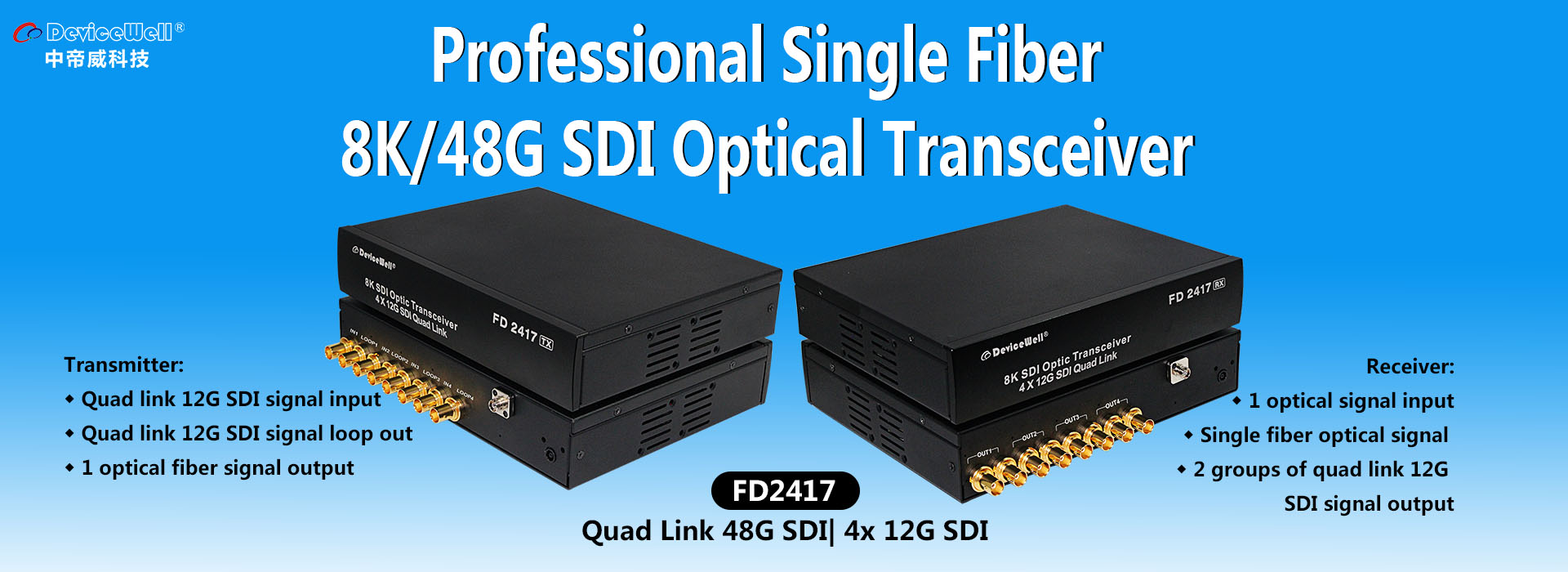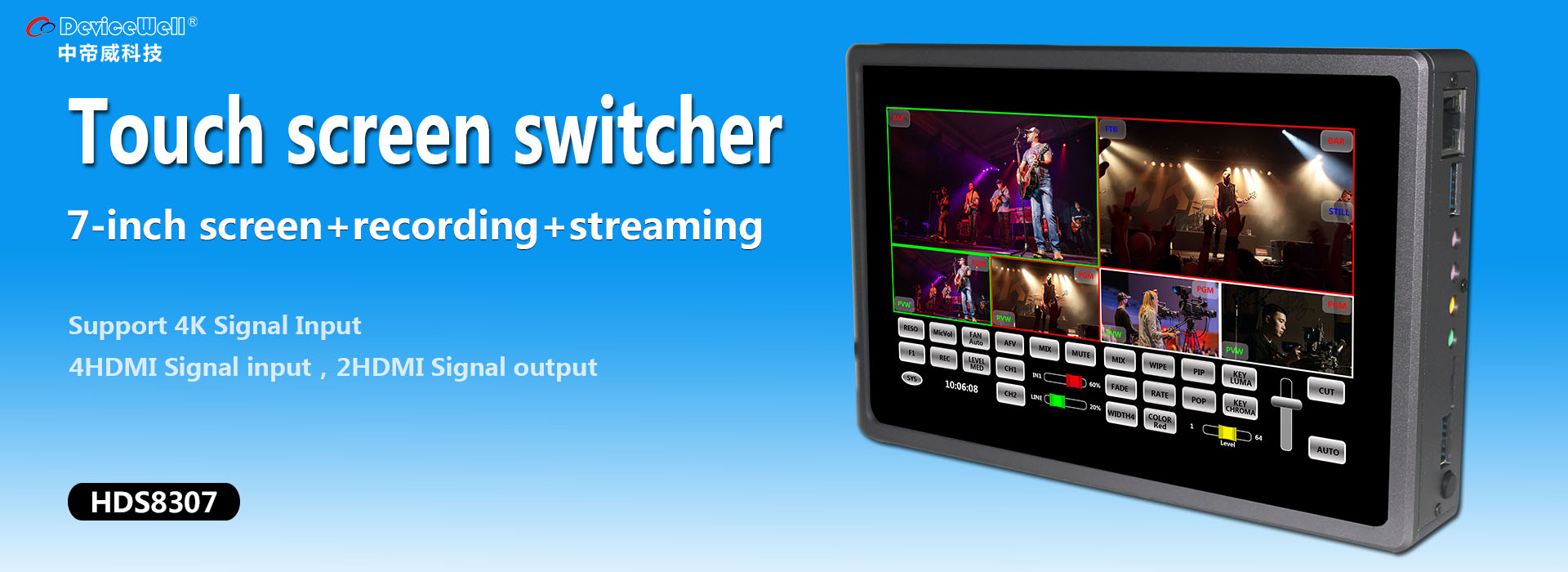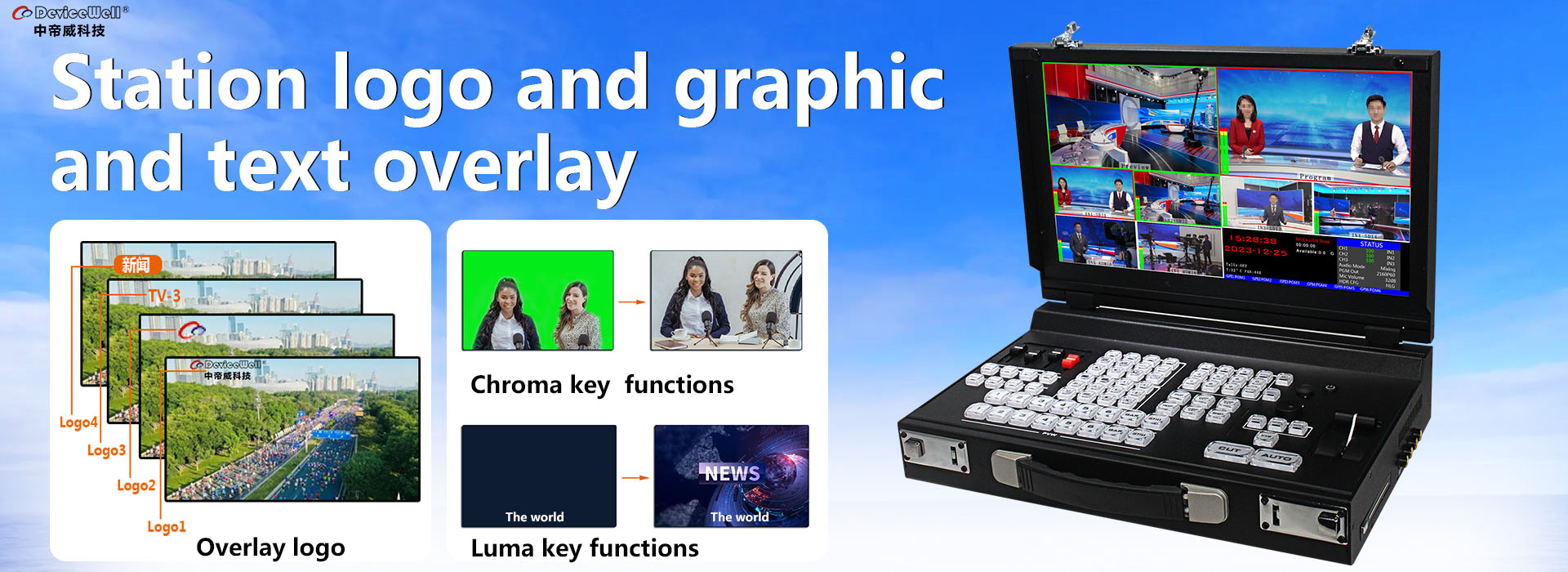Audio and video are out of sync during live broadcast?
Science is here! Audio and video are out of sync during live broadcast, see how Zhongdiwei explained?
When using an ordinary switcher for live broadcasting, there are always friends who report that the audio and video may be out of sync when some devices are paired. Which part is the problem?
Let's learn some expertise before analyzing this problem
Hardware switcher
Refers to a switcher whose internal processing mainly uses hardware to implement video switching. It is processed in an internal pipeline. Therefore, this type of switcher has fast processing speed, fast startup, and no crashes. less. Such as: not many types of special effects and special styles.
Software switcher
Refers to a switcher whose internal processing mainly uses software to implement video switching. It mainly depends on the CPU's computing method. Therefore, the processing speed of this type of switcher is determined by the computing power of the CPU. , Can achieve many "fancy" functions. Such as: complex special effects, 3D effects, etc.
Real-time uncompressed video
Refers to the uncompressed video content, high definition, and good real-time performance during video processing, but the amount of data is huge.
Compressed video
Means that the video is compressed by the algorithm, the resolution is reduced, the amount of data is small, and the real-time performance varies according to the compression algorithm.
Intra-frame compression
It means that the video is compressed within 1 frame of video when compression, low compression efficiency, but small delay, accurate to "frame" when linear editing, commonly used formats such as PRORES, DNX, MJPG, etc.
Inter-frame compression
Refers to video compression in multiple frames of video during compression, there are predicted frames, high compression efficiency, but large delay, commonly used such as MPEG, H.264, H.265, etc.
Prediction frame
Refers to the value of a frame predicted by the current frame picture and the previous frame or the next frame when the video is compressed. Restoring predicted frames requires data from adjacent frames, which is more difficult when editing linearly.
IP packet retransmission mechanism
When using IP packets to transmit data, if an error occurs during the transmission process or the destination is not reached, the sender will retransmit the packet. Especially in WIFI or 4G, interference signals will cause a large number of retransmissions of IP packets.
Audio predates video
It means that when video and audio are transmitted at the same time, audio arrives at the destination before video. It is usually caused by the absence of audio and video co-frequency mechanisms inside the device. Because the amount of audio data is quite small and the amount of video data is quite large. Especially when transmitting IP packets, IP packet retransmission and packet loss may cause audio to be earlier than video.
With the above basic concepts, let's analyze what kind of equipment will have audio and video out of sync? First, we will list the commonly used equipment for live broadcast:
Input source: professional camera, general camera, IP camera, computer graphics output, wireless video transmission, player, etc.
Output source: monitor, video recorder, PC streaming, mobile device streaming, large screen display, etc.
First, about the switcher
If a hardware switcher is used, the audio and video will not be out of sync, because the hardware switcher is pipelined, and the uncompressed audio and video are input and output in a certain order.
If a software switcher is used, it depends on the computing power of the CPU / GPU. The simple way is to open the "Task Manager". When most of the functions of the switcher are turned on, check the CPU and memory consumption. If it is less than 60%, it should be nothing. Problems, if greater than 80%, there may be problems. It is recommended to replace the CPU or increase the memory.
About the camera
Professional cameras are definitely no problem. Some IP cameras can also output SDI and HDMI signals, but it should be noted that IP cameras are usually implemented by software and SDI and HDMI are implemented by hardware. If the IP task is too heavy, it may affect SDI. And HDMI effects.
About computer and graphics card output
Computers and graphics cards are also software-based and usually work fine. However, depending on the materials used, the type of player, and the driver of the graphics card, audio and video may not be synchronized.
Fourth, wireless image transmission (emphasis)
There are currently two main types of wireless video transmission technologies:
1. Uncompressed wireless image transmission dominated by AMIMO. As mentioned earlier, uncompressed video has good real-time performance and high price, and usually does not have different audio and video problems.
2. With WIFI or improved WIFI technology, wireless image transmission using video compression method, small amount of data, low definition, but this type of product is cheap. The following is an analysis of wireless video transmission using WIFI and compressed video:
The amount of data that WIFI can transmit is small, and as the distance increases, the amount of data transmitted will decrease. Therefore, uncompressed video cannot be transmitted, and only compressed video can be used.
Currently, the mainstream compressed video format uses H.264 / H.265, while H.264 / H.265 uses inter-frame compression, and there is a prediction frame. The prediction frame needs to be restored during decoding, and the delay is relatively large.
The amount of audio and video is not large and can be compressed or not compressed.
When the WIFI signal quality is good, the audio and video can reach the destination in the normal order
When the WIFI signal quality is poor, because of the IP retransmission mechanism, the audio with small data volume reaches the destination earlier than the video
If the audio and video on the decoder have a synchronization mechanism, it can solve the audio and video synchronization problem, but if there is no synchronization mechanism, the audio will be broadcast first, the video will arrive late, and the audio and video will be out of sync.
Five, monitors and large screen displays, etc.
At present, the monitor basically adopts a hardware architecture, and audio and video will not be out of sync.
6. About video recorders and streaming equipment
As mentioned in the previous wireless diagram, as long as the inter-frame compression is used and there is no audio and video synchronization mechanism in the design, audio and video may be out of sync, and generally the audio is earlier than the video.
Well, friends, through the above explanation, you understand why the audio and video are not synchronized? And the audio is always earlier than the video? Here, let's summarize:
Occurrence of audio and video is out of sync, and usually occurs on equipment with video compression, equipment processed by software only, or equipment that transmits video and audio based on IP. This is rarely the case with uncompressed video. Is it time to check the type of equipment you are using? This will quickly find out which device is causing the audio and video to be out of sync.
Thank you for your attention!
Please leave us a message.







